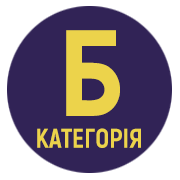CONVOLUTION REVERBERATORS IN MODERN SOUND ENGINEERING
Abstract
Sound engineering is an extremely important component of the music and film industry, as well as any other industry related to audio. One of the most important aspects of sound engineering is creating the effect of the audience’s presence in the room during sound playback. This is where convolution reverbs come to the rescue. In this scientific article, we thoroughly examine the technology of convolution reverbs and their application in modern sound engineering. The basis of convolution reverbs is a mathematical method that allows the emulation of the reverb of rooms whose acoustic properties have been measured and recorded in the form of impulse responses. The article will discuss the principles of operation of convolution reverbs, their history, areas of application, and advantages compared to conventional reverbs. Moreover, we will delve into the use of convolution reverbs in various industries such as music and film, audio-visual games, and entertainment venues. We will also explore potential future prospects for the use of this technology. The aim of this article is not only to provide a detailed overview of convolution reverbs, but also to help sound engineers and audio engineers understand how to use this technology correctly to create a sense of space and realistic sound. The article will investigate the basic principles of convolution reverbs, including their mathematical theory and algorithms based on this theory. Additionally, practical aspects of using convolution reverbs will be discussed, such as preparation and processing of impulse responses of rooms, selection of the appropriate parameters to achieve the desired sound, and techniques for creating a realistic virtual space. Overall, this article provides an overview of convolutional reverberators and their applications in modern sound engineering. It explores the mathematical theory and practical aspects of using convolutional reverberators to create a realistic sense of space and sound.
References
Ужинський М. Творче застосування процесорів ефектів у мистецькому просторі. Вісник Харківської державної академії дизайну і мистецтв. Мистецтвознавство. Архітектура: збірник наукових праць. Харків: ХДАДМ, 2012. № 4. С. 127–130.
Юдова-Романова К., Стрельчук В., Чубукова Ю. Режисерські інновації у використанні технічних засобів і технологій у сценічному мистецтві. Вісник Київського національного університету культури і мистецтв. Серія «Сценічне мистецтво». № 2 (1). 2019. С. 52–72.
Brown G.A. History of Reverb in Music Production by, iZotope Content Team May 1, 2020.
Deruty E. Creative Convolution: New Sounds From Impulse Responses. SOS, Sept. 2010. Web. Oct. 2013.
Kantorik S. Convolution reverb & impulse responses. Capstone Projects and Master’s Theses. 365, 2014.
Pohl I. et al. Spatial room acoustic visualization using virtual reality. Applied Sciences, 9 (18), 3823, 2019.
Young O. Creating a Convolution Reverberation Effect from Impulse Responses in Physical Spaces, 2020.





